Introduction to Warehouse Operations
Document Name: Introduction to Warehouse Operations
Author: Operation Department of Nippon Express Co., Ltd
Language: English
General description: This document is not a textbook or an ordinary reference book, but a manual written by Nippon Express Co., Ltd itself based on real-life situations in order to train the company’s global human resources, thereby reinforcing service quality as well as meeting customer requirements. The document’s content focuses on the basic knowledge of warehouse operation management, operation efficiency improvement, quality management and safety management in warehouses.
Main contents: The document includes the following principal contents:
- Chapter 1. Basic Operation Design. Chapter 1 introduces the functional areas in warehouses, calculates the design of the functional areas in warehouses, the ways of storing goods in warehouses, the measures to prevent spills, the methods of managing the stock position in warehouses and the methods of stock selecting.
- Chapter 2. Storage Operation. Chapter 2 introduces methods of quality control of stored goods, including temperature and humidity management, insect prevention, fire prevention, etc. as well as inventory management methods.
- Chapter 3. Cargo Handling Operation. Chapter 3 introduces the process and methods of importing, exporting, and distributing goods as well as the use of KPIs in logistics.
- Chapter 4. Safety Operation. Chapter 4 introduces the 5S rule, the basic knowledge of safety operation, especially accidents and prevention of accidents caused by forklifts.
Note when using in training and coaching: This is a useful document for training and coaching on warehouse management and operation, for the following reasons:
- The document is written in English, helping to supplement and improve professional English for warehouses
Examples of a structural description of the functional areas of a distribution warehouse
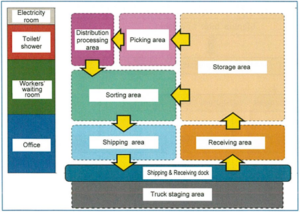

- The document is intuitive, vivid, and not heavy on academic theory. The basic approaches are presented briefly and concisely with various pictures and illustrative examples.
Example of a description of the techniques for lining up pallets
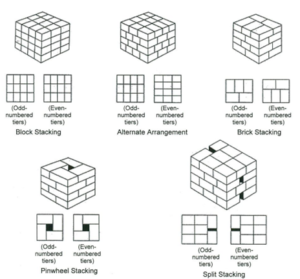
- Chapter 1 on basic operation design provides formulas, illustrative and intuitive examples, easy to understand and apply.
- It is very detailed about the types of vehicles and facilities used in warehouses such as types of forklifts, types of racks, types of pallets, etc. with comparison and analysis so that learners can understand the operation characteristics and understand how to use them appropriately.
Example of descriptions of shelves in stock
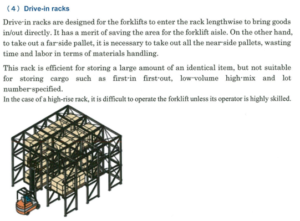 Example of descriptions of forklifts used in warehouses
Example of descriptions of forklifts used in warehouses
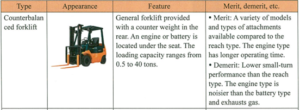
- It is good for safety training and coaching in warehouses, especially safety with forklifts. Chapter 4 has examples of accidents that can be used for training in recognizing causes, proposing preventive measures, etc.
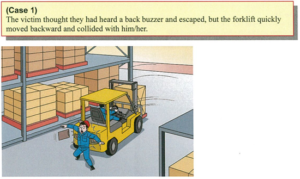
Example of an accident in a warehouse
- However, the document focuses on distribution warehouses without detailed instructions for specialized warehouses such as CFS, bonded warehouses, cold storage, e-commerce sorting centres, etc.
Reference: Assoc. Prof. Nguyen Minh Duc
Director of the Mekong – Japan Subregional Logistics Training Center in Vietnam,
Vietnam Maritime University
More detailed information on the document HERE
Translated by Pham Phuong Anh – Nguyen Huong



 Tiếng Việt
Tiếng Việt